25
Feb
New York Bill and Lawsuit Push for Farmworkers’ Right to Organize
(Beyond Pesticides, February 22, 2019) A bill introduced in the New York State Assembly and the Senate this month will break the century-long legal exclusion of agricultural workers from common labor protections. Among other protections, the Farmworker Fair Labor Practices Act will give New York farmworkers the right to collective bargaining, making employer intimidation and retaliation against organizing workers illegal. Citing farmworkersâ exposure to toxic chemicals among other occupational risks, former dairy farmworker and worker organizer Crispin Hernandez states, âThe legislation would do a lot to end the pervasive climate of fear, intimidation and retaliation that exists on farms today. It would also make farmworkersâ lives safer.â
The National Farm Worker Ministry notes that, âA union contract allows workers to report problems on the job without fear of getting fired.â In the case of farmworkers, problems on the job include exposures to toxic pesticides that workers, if organized, could freely report and collectively negotiate to remove from use to ensure their safety.
The bill, introduced to the Assembly by Queens Assemblymember Cathy Nolan and to the Senate by freshman Senator Jessica Ramos (D), will amend the New York State Labor Relations Act (NYSLRA) by removing farmworkers from the list of excluded laborers. âTo me there is no greater imperative than ensuring that farmworkers have their rights before we increase farming in our state,â said Senator Ramos, referring to the potential development of a new legalized marijuana industry that would expand the stateâs agricultural sector.
The NYSLRA was modeled directly after the Fair Labor Standards Act (FLSA), which, together with the 1935 National Labor Relations Act, excluded farmworkers and domestic workers from labor protections. At the time that those laws were drafted, the agricultural and domestic workforce consisted largely of African Americans. Advocates maintain that the roots of these laws, and their continued application to a now largely Latinx population, are based in structural racism.
The new legislation is supported by the New York Civil Liberties Union, on the basis that, âOrganization for the purposes of negotiation, furtherance of interests, and mutual protection is a civil liberty, shared by private and public employees alike.â However, as with past versions, A.1867 is receiving pushback from the New York Farm Bureau, which is urging public hearings to voice concerns over economic security for farms that employ agricultural laborers, the vast majority of which are large industrialized corporate farms. âI am willing to hear both sides, but nothing is going to convince me that these farmworkers donât deserve their human rights,â says Senator Ramos.
In parallel to the legislative push, Mr. Hernandez, now an organizer at the Workerâs Center of Central New York, filed a lawsuit this month against the state and the Farm Bureau on the grounds that denying farmworkers the rights to organize and collectively bargain under the current NYSLRA is in violation of the state constitution. Results of the case are pending, and a decision is expected in the coming months.
Current national and state labor laws fail to provide agricultural workers the collective power to ensure working conditions safe from toxic pesticide exposures and other workplace hazards. Amendments to the FLSA in the 1960s earned farmworkers a subset of minimum protections, such as minimum wage and recordkeeping provisions, but did not give workers the power to collectively ensure safe working conditions. Similarly, the Migrant and Seasonal Agricultural Worker Protection Act of 1983 offered some additional protections, such as disclosure requirements for employers, but did not grant farmworkers the right to collective bargaining or unionizing.
With reference to the FLSA, the nonprofit Farmworker Justice states, âThe law’s protections against the hazards of students working in shopping malls are stronger than the protections against children working in agriculture where toxic pesticides, heavy machinery and other hazards threaten their future.â Protections for children are arguably the most lacking and the most imperative in the agricultural sector, where neurodevelopmental toxins and endocrine disruptors put youth at especially high risk.
New York farmworkers and farmworker justice advocates have been pushing for amendments to the NYLSA for over 20 years, but the state has not passed any new agricultural labor legislation since 1999. The last New York agricultural labor reform bill came to the senate in 2010, where it lost by three votes. With a Democratic-controlled State Senate, this might be the year the bill breaks through.
In recent years, the agricultural justice movement has gained new momentum in New York, sparked in large part by Hernandezâs organizing efforts. Fueled by public support in the face of his employerâs retaliation against organizing activities, Mr. Hernandez filed a lawsuit against the state in 2016. In a symbolic victory, Governor Andrew Cuomo and former Attorney General Eric Schneiderman both agreed publicly that the farmworker exclusion in the NYLSA violated the state constitution, and neither defended the lawsuit in court. However, as in the current case, the Farm Bureau intervened, testifying that the seasonal nature of agricultural work necessitates limiting workersâ ability to organize. The case was closed in 2018, with the majority opinion denying any constitutional violations. Undeterred, Mr. Hernandez and fellow worker advocates are keeping the momentum alive, fighting on two fronts this time.
The movement for farmworker justice holds intimate ties to the fight for stronger pesticide regulations. Cesar Chavez, the esteemed lifelong advocate for farmworker rights and founder of United Farm Workers (UFW), put his full energy into the fight against pesticides, drawing attention to the poisoning of farmworkers and their children. However, in recent years progress has been stymied in large part by employer intimidation and retaliation of workers attempting to organize.
Current regulations are not viewed by Beyond Pesticides as adequately protection of agricultural workers, and farmworker poisoning continues unchecked, begging the question: if the government does not protect workers and their families, and employers do not protect workers and their families, who will? With renewed energy in the labor movement, farmworker coalitions are positioning themselves to bring negotiation and labor tactics back as tools for transforming agricultural practices. Learn more about historic efforts and active organizations fighting for farmworker justice on the Beyond Pesticides Agricultural Justice page. Stay abreast of new developments in the movement for agricultural transformation by following the Daily News Blog.
All unattributed positions and opinions in this piece are those of Beyond Pesticides.









 (Beyond Pesticides, February 22, 2019)Â Lake Erie, the 11th largest freshwater lake in the world, is once again plagued with pollution, although in this decade it is due primarily to agricultural runoff â as opposed to the raw sewage and industrial effluents that afflicted it in the mid-20th century. Concerned and weary Toledo, Ohio residents are seeking remedies through the adoption of a
(Beyond Pesticides, February 22, 2019)Â Lake Erie, the 11th largest freshwater lake in the world, is once again plagued with pollution, although in this decade it is due primarily to agricultural runoff â as opposed to the raw sewage and industrial effluents that afflicted it in the mid-20th century. Concerned and weary Toledo, Ohio residents are seeking remedies through the adoption of a 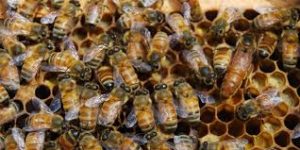 (Beyond Pesticides, February 21, 2019)Â In 2018, the Environmental Protection Agency (EPA)
(Beyond Pesticides, February 21, 2019)Â In 2018, the Environmental Protection Agency (EPA)  (Beyond Pesticides, February 20, 2019) Women exposed to DDT during âearly windows of susceptibilityâ in their childhood are at increased risk of developing breast cancer, according to
(Beyond Pesticides, February 20, 2019) Women exposed to DDT during âearly windows of susceptibilityâ in their childhood are at increased risk of developing breast cancer, according to 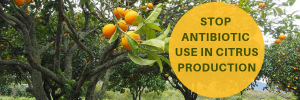 (Beyond Pesticides, February 19, 2019)Â At the request of Beyond Pesticides, the Environmental Protection Agency (EPA) has extended its public comment period on antibiotics in citrus production until March 14. With this extra time, please share this action widely to stop this threat.
(Beyond Pesticides, February 19, 2019)Â At the request of Beyond Pesticides, the Environmental Protection Agency (EPA) has extended its public comment period on antibiotics in citrus production until March 14. With this extra time, please share this action widely to stop this threat. (Beyond Pesticides, February 15, 2019)Â A
(Beyond Pesticides, February 15, 2019)Â A  (Beyond Pesticides, February 14, 2019) Over the course of the last two weeks in Bavaria â a southern state of Germany â locals rallied in an effort to save the bees.
(Beyond Pesticides, February 14, 2019) Over the course of the last two weeks in Bavaria â a southern state of Germany â locals rallied in an effort to save the bees.  (Beyond Pesticides, February 11, 2019) A new
(Beyond Pesticides, February 11, 2019) A new 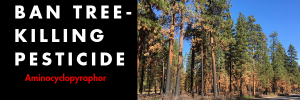 (Beyond Pesticides, February 11, 2019)Â Aminocyclopyrachlor (ACP) is a tree-killing pesticide masquerading as a broadleaf herbicide. The Oregon Department of Agriculture (ODA) has the opportunity to lead the country in banning this inherently dangerous chemical. According to ODA, nearly 1,500 dead or dying trees have been reported along Oregonâs iconic Interstate 20, home to old growth ponderosa pines. Many of these 150- to 300-year old trees are now dead from ACP exposure. ODA indicated that âbecause [ACP] is a relatively new herbicide it is unknown how many trees stressed from past applications of [ACP] will die in the future.â
(Beyond Pesticides, February 11, 2019)Â Aminocyclopyrachlor (ACP) is a tree-killing pesticide masquerading as a broadleaf herbicide. The Oregon Department of Agriculture (ODA) has the opportunity to lead the country in banning this inherently dangerous chemical. According to ODA, nearly 1,500 dead or dying trees have been reported along Oregonâs iconic Interstate 20, home to old growth ponderosa pines. Many of these 150- to 300-year old trees are now dead from ACP exposure. ODA indicated that âbecause [ACP] is a relatively new herbicide it is unknown how many trees stressed from past applications of [ACP] will die in the future.â (Beyond Pesticides, February 8, 2019)Â Scientists from the U.S. Geological Survey (USGS) and the University of Iowa (UI) have published
(Beyond Pesticides, February 8, 2019)Â Scientists from the U.S. Geological Survey (USGS) and the University of Iowa (UI) have published  (Beyond Pesticides, February 7, 2019) A
(Beyond Pesticides, February 7, 2019) A 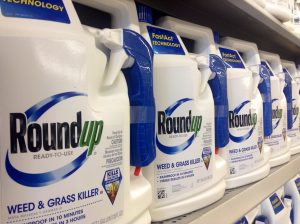 (Beyond Pesticides, February 6, 2019) The American Association for the Advancement of Science (AAAS) has awarded two researchers the groupâs Scientific Freedom and Responsibility Award for their work uncovering the link between glyphosate and chronic kidney disease (CKD), which has killed at least 25,000 Sri Lankans and 20,000 Central Americans. Award recipients Sarath Guanatilake, MD, and Channa Jayasumana, PhD, faced death threats and claims of research misconduct as they went toe to toe with agrichemical industry giant Monsanto (now Bayerâs Monsanto), the major manufacturer of glyphosate-based products like Roundup.
(Beyond Pesticides, February 6, 2019) The American Association for the Advancement of Science (AAAS) has awarded two researchers the groupâs Scientific Freedom and Responsibility Award for their work uncovering the link between glyphosate and chronic kidney disease (CKD), which has killed at least 25,000 Sri Lankans and 20,000 Central Americans. Award recipients Sarath Guanatilake, MD, and Channa Jayasumana, PhD, faced death threats and claims of research misconduct as they went toe to toe with agrichemical industry giant Monsanto (now Bayerâs Monsanto), the major manufacturer of glyphosate-based products like Roundup. (Beyond Pesticides, February 5, 2019) Linuron, an herbicide registered for use by the U.S. Environmental Protection Agency (EPA), yet
(Beyond Pesticides, February 5, 2019) Linuron, an herbicide registered for use by the U.S. Environmental Protection Agency (EPA), yet 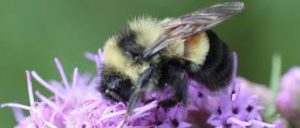 (Beyond Pesticides, February 4, 2019)Â Although the rusty patched bumblebee was placed on the endangered species list in 2017, the Trump Administration has failed to put in place legally required safeguards for the species. The U.S. Department of the Interior (DOI) must designate locations where additional protections could help restore the endangered bumblebeeâs population.
(Beyond Pesticides, February 4, 2019)Â Although the rusty patched bumblebee was placed on the endangered species list in 2017, the Trump Administration has failed to put in place legally required safeguards for the species. The U.S. Department of the Interior (DOI) must designate locations where additional protections could help restore the endangered bumblebeeâs population. (Beyond Pesticides, February 1, 2019)Â Prior to a pesticide ban taking effect in Montgomery County Maryland Parks, the Department of Parks announced in mid-December 2018 that it would
(Beyond Pesticides, February 1, 2019)Â Prior to a pesticide ban taking effect in Montgomery County Maryland Parks, the Department of Parks announced in mid-December 2018 that it would  (Beyond Pesticides, January 31, 2019) On January 16, the Center for Food Safety (CFS) filed a new
(Beyond Pesticides, January 31, 2019) On January 16, the Center for Food Safety (CFS) filed a new  (Beyond Pesticides, January, 30, 2019) Bug bombs are completely ineffective at reducing German
(Beyond Pesticides, January, 30, 2019) Bug bombs are completely ineffective at reducing German  (Beyond Pesticides, January 29, 2019) After eight months of deliberation and discussion, the
(Beyond Pesticides, January 29, 2019) After eight months of deliberation and discussion, the  (Beyond Pesticides, January 28, 2019) AÂ September 2018 report from the Office Inspector General (OIG) of the U.S. Environmental Protection Agency (EPA) identified issues important to protecting health and the environment. The EPAâs response to the report left many of these problems unresolved.
(Beyond Pesticides, January 28, 2019) AÂ September 2018 report from the Office Inspector General (OIG) of the U.S. Environmental Protection Agency (EPA) identified issues important to protecting health and the environment. The EPAâs response to the report left many of these problems unresolved. (Beyond Pesticides, January 25, 2019) The partial government shutdownânow in its second monthâis disrupting federal oversight of food safety for various pathogens and pesticides. Labs are shuttered, many government agency employees are furloughed, and those still working are doing so without pay. The ongoing obstruction to government assessment of the food supply puts U.S. consumers at risk.
(Beyond Pesticides, January 25, 2019) The partial government shutdownânow in its second monthâis disrupting federal oversight of food safety for various pathogens and pesticides. Labs are shuttered, many government agency employees are furloughed, and those still working are doing so without pay. The ongoing obstruction to government assessment of the food supply puts U.S. consumers at risk. (Beyond Pesticides, January 24, 2019) A
(Beyond Pesticides, January 24, 2019) A  (Beyond Pesticides, January, 23, 2019) Individuals that have been acutely poisoned by pesticides at some time in their life may be more likely to lose their sense of smell, according to a
(Beyond Pesticides, January, 23, 2019) Individuals that have been acutely poisoned by pesticides at some time in their life may be more likely to lose their sense of smell, according to a 
